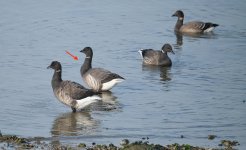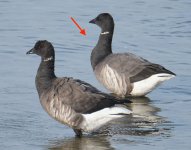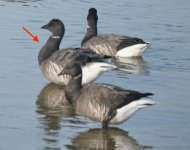I think it’s a complicated question and perhaps depends on how we define ‘speciation’ (which I am not going to attempt) as well as what taxonomic thinking we apply to various species and their complexes.
However, I don’t believe it’s a case of ‘semantics’ and would answer it along similar lines to James;
Some good reading here although a bit above my pay grade :smoke:
https://academic.oup.com/jhered/article/105/S1/795/2961884
I would suggest ‘hybrids’ to mean a cross between two distinct species but not mutually exclusive so as to exclude crosses between different sub-species of the same taxa or sub-species of different taxa either. The resultant offspring in this sense then, is an individual that expresses a variant of characters of either phenotype of the parent but crucially, not such an often occurring phenomena to the extent that a distinct and fertile population is formed (being limited by back-crosses or infertility) and crucially, not geographically characterised.
‘Intergrades’ however, I would suggest, are ‘intermediates’ between different pure sub-species, that are often clinal in their phenology and form genotypically distinct and self-sustaining populations in a geographical area as a result of extensive gene flow between 2 (or more) parental taxa overlapping in the contact area at the edge of the intergrade zone. Eventually, some of these self-sustaining and distinct intergrade populations may be afforded sub-species status and even full species classification. Slightly different to an intergrade zone, would be a hybrid zone where different parental taxa in a contact area will readily hybridise but the populations of both parents are stabilised in the hybrid zone and there is no transitional phenotypes or clinal variants and the hybrid zone itself remains narrow.
The key therefore, imo, does not necessarily hinge on whether ‘hybrids’ are between different species and intergrades are between sub-species but rather what the longterm outcome is as a result of two species or sub-species cross breeding and how permeable the gene barriers are between populations of the parental taxa.
PS I agree the OP are Dark-bellied!








